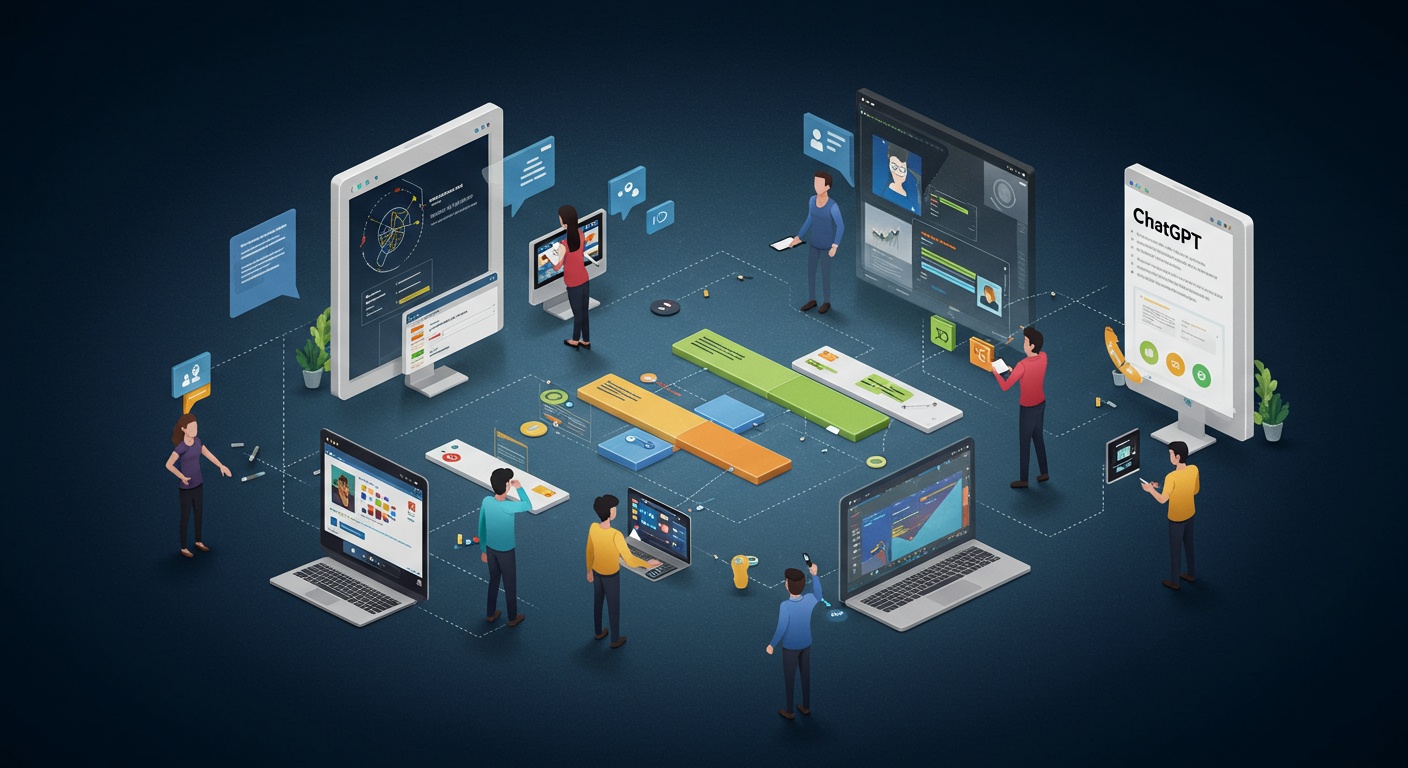Introduction
Agile project management, right? It’s all about flexibility, iterative progress, and, well, speed. But ever noticed how sometimes, even with the best intentions, things can still get bogged down? Communication breakdowns, scope creep, endless meetings… the usual suspects. We’ve all been there, staring blankly at a Jira board wondering where the day went.
That’s where ChatGPT comes in. Now, I know what you might be thinking: “Another AI tool promising the moon?” But hear me out. This isn’t just about automating tasks; it’s about fundamentally changing how we approach Agile. Think of it as a super-powered assistant that can help with everything from sprint planning to daily stand-ups. For instance, you can use it to generate user stories, refine acceptance criteria, or even summarize lengthy meeting notes. Furthermore, it can help you identify potential roadblocks before they even become problems.
So, in this blog post, we’re diving deep into the practical applications of ChatGPT for Agile project management. We’ll explore how you can use it to streamline workflows, improve team collaboration, and ultimately, deliver projects faster and more efficiently. We’ll look at real-world examples, prompt engineering tips, and even some potential pitfalls to avoid. Get ready to unlock a new level of agility!

ChatGPT for Agile Project Management: Streamlining Workflows
Okay, so Agile project management is all about being, well, agile. Quick sprints, constant feedback, and adapting to change. But let’s be honest, sometimes it feels more like herding cats than a smooth, efficient process. That’s where ChatGPT comes in. It’s not a magic bullet, but it can seriously streamline things.
Boosting Efficiency with AI: Where Does ChatGPT Fit?
Think of ChatGPT as your super-powered assistant. It can handle a bunch of the tedious tasks that bog down Agile teams, freeing you up to focus on the actual strategy and problem-solving. For instance, it can help with:
- Sprint Planning: Generating user stories and acceptance criteria. No more staring at a blank screen!
- Daily Stand-ups: Summarizing progress and identifying roadblocks. Because nobody wants to listen to a five-minute monologue.
- Retrospectives: Analyzing feedback and suggesting improvements. Get actionable insights, faster.
- Documentation: Creating meeting minutes, project reports, and even initial drafts of technical documentation. Save time and ensure consistency.
Specific Use Cases: Getting Down to Brass Tacks
So, how does this actually work in practice? Let’s dive into some specific examples. First, imagine you’re struggling to define clear user stories. You can feed ChatGPT a brief description of the feature and ask it to generate several user stories, complete with acceptance criteria. It’s not perfect, of course, you’ll need to refine them, but it’s a huge head start. And speaking of head starts, if you’re looking to improve your prompt engineering skills, this guide to ethical AI content creation might be just what you need.
Furthermore, consider daily stand-ups. Instead of each team member verbally reporting their progress, they could quickly update a shared document. Then, ChatGPT can summarize that document into a concise overview, highlighting key accomplishments and potential issues. This saves time and ensures everyone is on the same page. Plus, it’s easier to track progress over time.
Overcoming Challenges and Maximizing Value
Now, it’s important to acknowledge that ChatGPT isn’t a perfect solution. It’s still an AI, and it can make mistakes. You need to carefully review its output and ensure it’s accurate and relevant. Also, remember that ChatGPT is only as good as the prompts you give it. The more specific and detailed your prompts, the better the results will be. Therefore, experiment with different prompts and refine your approach over time.
In conclusion, ChatGPT offers a powerful set of tools for streamlining Agile project management workflows. By automating tedious tasks, generating insights, and improving communication, it can help teams become more efficient and productive. Just remember to use it wisely and always double-check its work. With the right approach, ChatGPT can be a valuable asset for any Agile team.
Conclusion
So, we’ve journeyed through the landscape of using ChatGPT to boost agile project management, and honestly, it’s pretty wild, isn’t it? We’ve seen how it can help with everything from sprint planning to risk assessment, and even generating those sometimes-tedious user stories. It’s like having a super-powered assistant that never sleeps, always ready to brainstorm or summarize information. However, it’s not a magic bullet, of course. It requires careful prompting, a good understanding of agile principles, and most importantly, human oversight. After all, agile is about people and interactions, and ChatGPT is just a tool to facilitate that, not replace it.
It’s funny how technology, which is often seen as cold and impersonal, can actually help us be more human in our work. By automating some of the more mundane tasks, ChatGPT frees us up to focus on the creative problem-solving, the team collaboration, and the strategic thinking that truly makes agile, well, agile. Furthermore, as we continue to integrate AI into our workflows, it’s important to remember that ethical considerations are paramount. For example, ensuring fairness and transparency in AI-driven decision-making is crucial for maintaining trust and accountability within agile teams. The Prompt Engineer’s Guide to Ethical AI Content Creation provides valuable insights into navigating these challenges. Moreover, it’s not just about efficiency; it’s about making our work lives better, more fulfilling, and ultimately, more successful.
But here’s the thing that really sticks with me: are we truly ready to embrace this level of assistance? Are we prepared to adapt our roles and responsibilities to work alongside AI in a meaningful way? It’s a question worth pondering, because the future of agile, and project management in general, is undoubtedly intertwined with the evolution of AI. So, maybe take some time to experiment with ChatGPT in your own agile projects. See what works, what doesn’t, and how it can genuinely improve your team’s workflow. The possibilities are endless, and the journey is just beginning.
